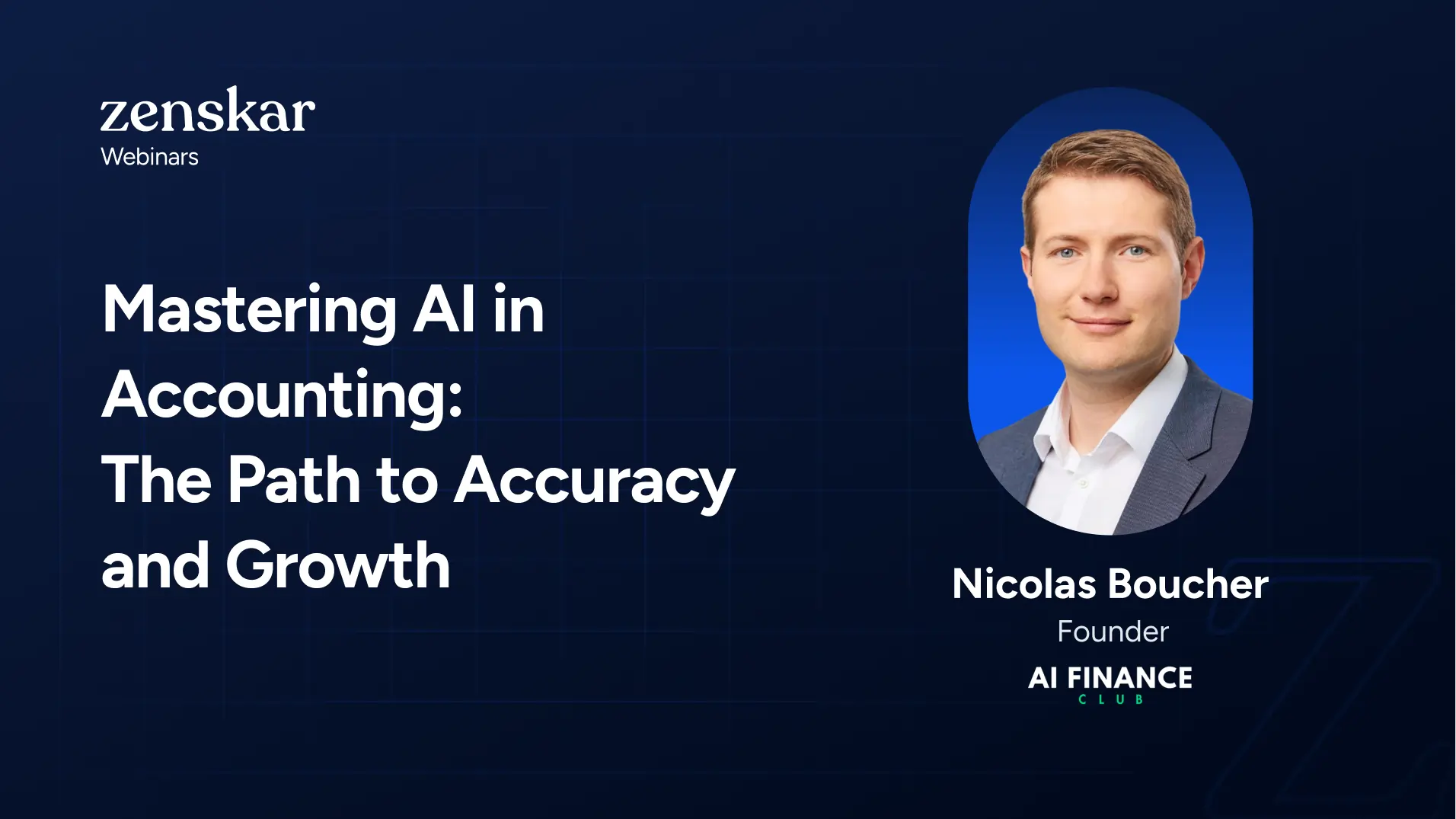About this webinar
A well-crafted financial strategy is the backbone of a company’s growth, profitability, and long-term stability. It aligns business objectives with financial goals, ensuring resources are invested and optimized effectively. But when market volatilities and economic uncertainty become the norm, static strategies can quickly turn into liabilities.
CFOs and finance leaders must continuously evaluate and reset their financial strategies to remain agile and resilient. Timely reassessment helps organizations adapt to shifting market conditions, mitigate risks, and seize new opportunities—ensuring financial stability and long-term success even in uncertain times.
Who should attend
If you’re responsible for financial planning, forecasting, or strategic decision-making in a fast-growing company, this webinar is for you.
Recommended for finance leaders - CFOs, VPs, Directors of Finance or those in strategic finance roles.
Takeaways
By the end of this session, you can:
- Learn when to reassess and reset your financial strategy in response to market shifts
- Balance competing priorities like revenue growth, cost optimization, and investment strategies.
- Align with all the stakeholders including business leaders to reset financial strategies.
- Learn proven frameworks to analyze past performance, set benchmarks, and find the essential tools to recalibrate financial strategies.
About the speaker
Antonio Reza is a seasoned finance executive with over 15 years of experience at Fortune 500 companies, including Google, Microsoft, and GE. He has led finance and strategy teams across multiple companies from four industries and 8 different countries, bringing a global perspective to financial management. His expertise includes Financial Planning & Analysis (FP&A), Commercial Finance, Auditing and Management & Financial Accounting.
Webinar summary
1. When should a company define its financial strategy for the year?
For me, the financial strategy needs to be defined before building the budget. It’s crucial to first understand the ideal vision, like market share expansion or revenue goals, and then work backwards to define how you’ll allocate capital. In my experience, I’ve seen companies try to define their strategy after budgets are already in place, and that approach often constrains long-term ambitions. At PVH, I make sure that strategy is set first, and then budget becomes the mechanism to fund that strategy.
2. What is the difference between financial strategy and budgeting in practical terms?
I see financial strategy as the broader, long-term vision. For example, at Microsoft, my strategy was to increase market share against AWS. That was a clear goal that defined the direction—whether to invest in products or sales. The budget came after to allocate real dollars towards that goal. The strategy focuses on the “what” and “why,” and the budget is about the “how” and “how much” to get there. Strategy should inform budget decisions, not the other way around.
3. How often should a financial strategy be reset?
I recommend revisiting your financial strategy at least every six months. Not everything needs to change, but you have to stay agile. For example, when customer satisfaction scores at PVH dip, or when feedback from the store level signals trouble, it's time to reassess. Similarly, if a product isn’t selling as expected, those insights should trigger a strategic review. I believe regular customer feedback is essential in guiding these strategic resets.
4. Can you share an example of a strategy that failed and what you learned?
At General Electric, we attempted to shift from custom-engineered products to standardized ones. The idea was to reduce costs, but we didn’t account for how often we’d still need to accommodate customer-specific requests. We thought it would save money, but we ended up increasing costs due to custom amendments. The key takeaway is that strategy needs to be informed by customer feedback from the beginning. Without their input, no amount of Excel modeling can predict the true outcome.
5. How do you ensure alignment across finance, sales, and operations?
I always say, “walk the shop.” At PVH, I make sure the finance team spends time with the sales and operations teams. We need to understand what goes on at the store level to translate financial goals into actionable tasks. I have always found that when we tie numbers to something concrete—like the number of t-shirts to be sold per store per week—it becomes much easier to align the entire organization. It’s about making financial metrics relatable and actionable.
6. How do you manage resistance from within the team during strategic changes?
I take a direct approach. If someone disagrees with a strategy after I’ve explained the rationale, I’ll say, “Even if we’re wrong, we’re learning.” I encourage action over indecision. In my experience, it’s better to try something, even if imperfect, than to wait forever for the perfect plan. I also challenge those who disagree to come up with a better solution. In most cases, those who resist don’t have an alternative—they just want to criticize.
7. What is the CFO’s role in driving financial strategy?
As I say at all the CFO exchanges, the CFO is responsible for driving the financial strategy and ensuring that the operational leaders are aligned with it. At PVH, I work closely with operational leaders to ensure they are focused on the right metrics that will drive our financial outcomes. It's not just about managing cost centers—it’s about making sure that every decision, whether it’s hiring more salespeople or launching a new product, aligns with the financial strategy and long-term growth goals.
8. How has automation and artificial intelligence helped in financial planning?
At Microsoft, we used machine learning to forecast sales, which saved a significant amount of time that would’ve been spent manually crunching numbers. This freed up our time to focus on strategic discussions instead of data gathering. At Google, we pushed for a more advanced approach using SQL and Python. In companies like PVH and General Electric, though, we still rely heavily on Excel, but we are gradually introducing smaller automation tools like UI Path to streamline basic tasks like accounts payable system.
9. Are there any tools you recommend for automation or forecasting?
At PVH, I have tested CoPilot for simulations like Monte Carlo models, which work well for basic forecasts. However, for a more comprehensive solution, I’ve seen Pigment work well for cloud-native companies, where everything is already digitized. We also used UI Path at GE to automate some manual tasks like invoice reconciliation. When it comes to financial planning tools, I always recommend starting small and testing one workflow before committing to a larger investment.
10. How do you plan workforce strategy in different industries?
In a service business like Google Cloud Consulting, workforce planning is straightforward—how many billable hours can be worked in a week? You can directly correlate hours worked to revenue generated. In retail at PVH, it’s a bit more complex. I focus on sales per store and per category. For software companies, you need to consider the sales cycle and account size, as it can vary greatly from one deal to another. Regardless of the industry, I use productivity metrics like revenue per employee or profit per employee to evaluate workforce effectiveness.
11. How do you factor macroeconomic risks into your planning framework?
At PVH, when tariffs were imposed on European textiles, I immediately modeled various scenarios to understand the impact on costs, margins, and overall strategy. This kind of scenario modeling is essential. I also always think about what risks could derail the strategy and have contingency plans in place. I believe you should continuously evaluate what could change in the external environment and adjust your strategy to ensure you can remain agile.
12. How do you assess if a new finance tool is worth investing in?
I recommend starting with a trial period—whether that’s a free trial or a discounted pilot. At PVH, I always try to negotiate with vendors to test their tools before making a long-term commitment. The key is to test it on a small scale and see if it actually saves time or provides insights that help in decision-making. At Microsoft, the finance transformation worked because we were given the capital to invest in upgrading our finance platform. I believe companies should make the commitment to transform, even if it means starting small.

















.webp)
